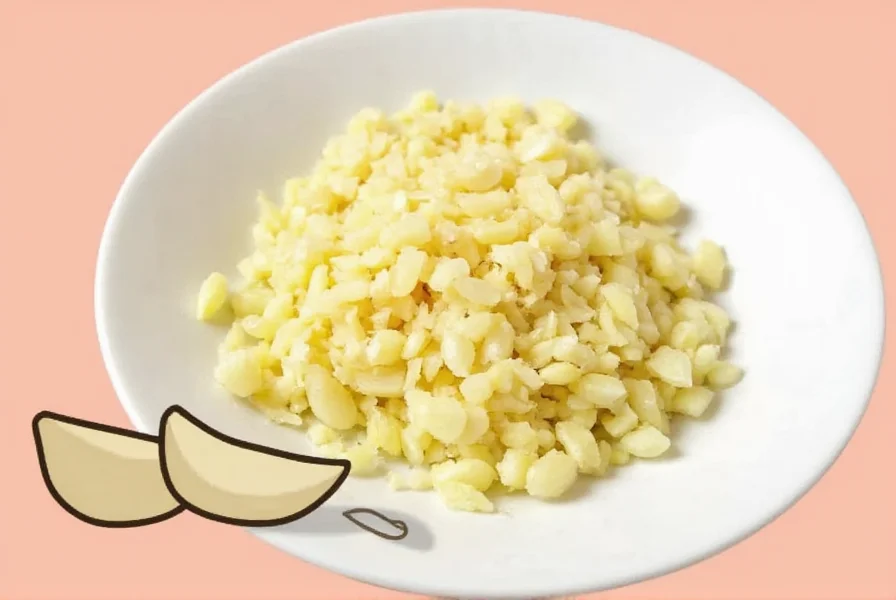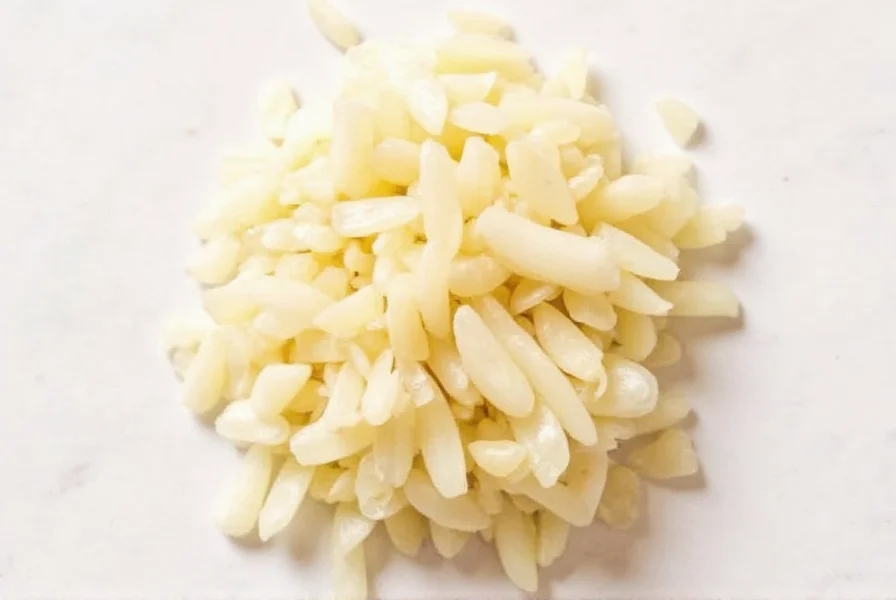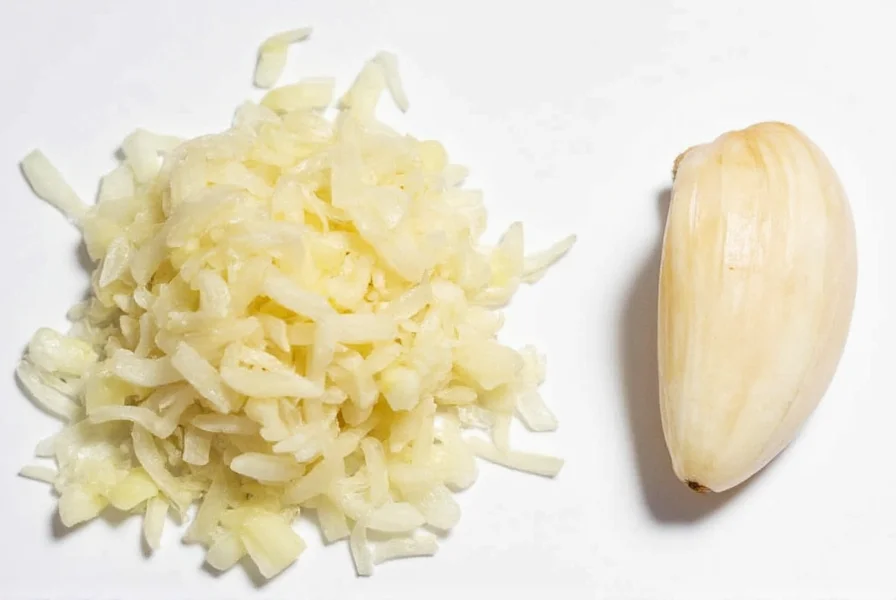Understanding garlic measurements is essential for achieving perfect flavor in your cooking. Many recipes call for specific quantities of garlic, but the difference between fresh cloves and pre-minced products can create confusion in the kitchen. Getting these measurements right affects both taste and recipe success.
Garlic Measurement Fundamentals
Garlic comes in various forms: whole bulbs, individual cloves, freshly minced, or pre-minced in jars. Each form requires different measurement approaches. The size of garlic cloves varies significantly, which impacts conversion accuracy. Small cloves might yield 1/4 teaspoon of minced garlic, while large cloves can produce up to 1 teaspoon.
| Garlic Form | Equivalent Measurement |
|---|---|
| 1 small garlic clove (fresh) | 1/4 teaspoon minced garlic |
| 1 medium garlic clove (fresh) | 1/2 teaspoon minced garlic |
| 1 large garlic clove (fresh) | 3/4 teaspoon minced garlic |
| 1 extra-large garlic clove (fresh) | 1 teaspoon minced garlic |
| 1 teaspoon fresh minced garlic | 1/2 teaspoon jarred minced garlic |
Factors Affecting Garlic Conversions
Several variables influence the garlic clove to minced garlic conversion accuracy:
Clove size variation: Commercial garlic bulbs contain cloves of different sizes. When recipes specify "one clove," they typically mean a medium-sized clove weighing approximately 3-7 grams.
Preparation method: Hand-minced garlic tends to be more pungent than jarred varieties due to enzymatic reactions that occur when garlic is crushed. This means you might need slightly less jarred garlic to achieve similar flavor intensity.
Storage duration: Jarred minced garlic loses potency over time. Freshly prepared minced garlic delivers stronger flavor than pre-minced products stored for weeks.

Practical Kitchen Application
When substituting minced garlic for fresh cloves in recipes, consider these practical tips:
- For most standard recipes calling for 1-3 cloves, use the 1:1/2 teaspoon ratio as your baseline
- When using jarred minced garlic, start with 30-50% less than the conversion suggests, then adjust to taste
- For delicate dishes like salad dressings or light sauces, use the lower end of the conversion range
- For robust dishes like stews or roasted meats, you can safely use the higher end of the conversion range
Professional chefs often recommend tasting as you go when working with garlic substitutions. The fresh garlic to jarred garlic ratio isn't always perfectly linear due to flavor degradation in preserved products.
Common Measurement Mistakes
Cooks frequently make these errors when converting how much is one clove of minced garlic:
- Using tablespoon measurements instead of teaspoons (1 tablespoon = 3 teaspoons)
- Not accounting for the stronger flavor of freshly minced versus jarred garlic
- Assuming all cloves from a single bulb are the same size
- Measuring jarred garlic without draining excess liquid first
For best results, drain jarred minced garlic through a fine mesh strainer before measuring to remove excess preservative liquid that can dilute flavors.
Advanced Substitution Guidance
When your recipe requires larger quantities, understanding garlic conversion chart for cooking becomes even more critical:
- 3-4 cloves fresh garlic = 1 1/2 to 2 teaspoons minced garlic
- 6 cloves fresh garlic = 1 tablespoon (3 teaspoons) minced garlic
- 1 whole garlic bulb (10-12 cloves) = 5-6 tablespoons minced garlic
Remember that roasted garlic yields a sweeter, milder flavor profile. When substituting roasted garlic for raw, you may need to increase quantities by 25-50% to achieve similar flavor impact.

Preserving Garlic Flavor Integrity
The enzymatic reaction that creates garlic's characteristic flavor begins when cells are ruptured through cutting or crushing. Freshly minced garlic develops more complex flavors over 5-10 minutes after preparation. Jarred minced garlic contains citric acid or other preservatives that inhibit this process, resulting in a more one-dimensional flavor profile.
For recipes where garlic is a featured ingredient, fresh preparation generally produces superior results. When time constraints require using pre-minced products, look for varieties with minimal additives and refrigerate after opening to preserve quality.
Frequently Asked Questions
How much jarred minced garlic equals one fresh garlic clove?
One medium fresh garlic clove equals approximately 1/2 teaspoon of jarred minced garlic. For small cloves, use 1/4 teaspoon; for large cloves, use 3/4 teaspoon. Remember that jarred garlic is often milder, so you may need to adjust slightly based on taste.
Can I substitute minced garlic for garlic powder in recipes?
Yes, but use caution with proportions. Generally, 1/8 teaspoon garlic powder equals one fresh garlic clove. Garlic powder is more concentrated, so start with less and adjust to taste. For minced garlic to garlic powder conversion, 1/2 teaspoon minced garlic equals about 1/8 teaspoon garlic powder.
Why does my jarred minced garlic taste different from fresh?
Jarred minced garlic contains preservatives like citric acid that prevent browning but also inhibit the enzymatic reactions creating garlic's complex flavors. The texture differs too - fresh minced garlic has fibrous strands while jarred is more uniform. For best flavor, drain excess liquid and let it sit for 5 minutes before using.
How should I store leftover minced garlic?
Store freshly minced garlic in an airtight container in the refrigerator for up to 3 days. For longer storage, freeze in ice cube trays with olive oil (1 teaspoon per cube). Jarred minced garlic should be refrigerated after opening and used within 2-3 weeks for best quality.
Does the garlic conversion change when roasting?
Yes, roasting mellows garlic's flavor significantly. When substituting roasted garlic for raw in recipes, increase quantities by 25-50%. One roasted medium clove yields about 3/4 teaspoon of soft roasted garlic pulp, which has a sweeter, less pungent flavor than raw minced garlic.











 浙公网安备
33010002000092号
浙公网安备
33010002000092号 浙B2-20120091-4
浙B2-20120091-4